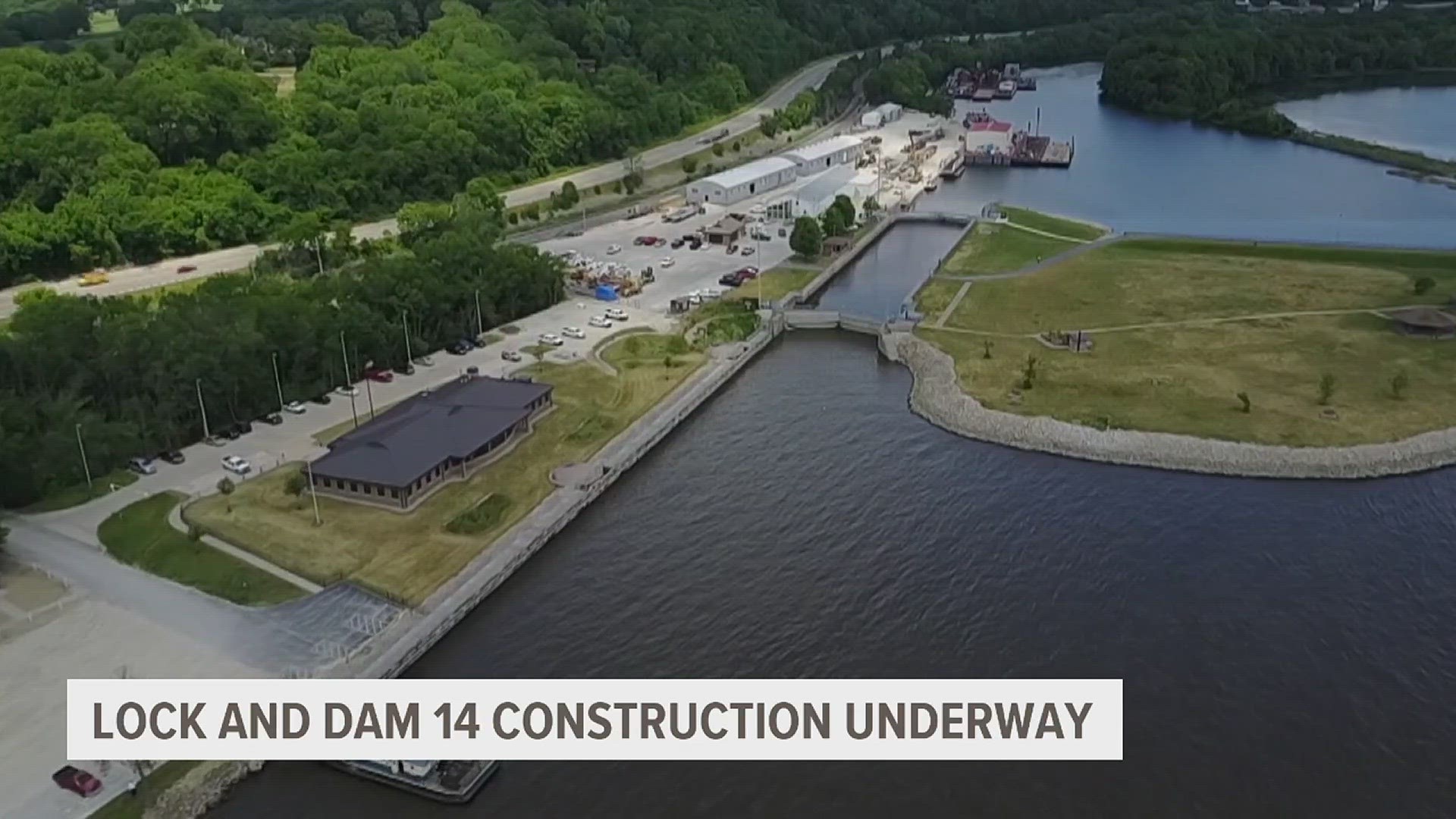BETTENDORF, Iowa — The U.S. Army Corps of Engineers (USACE) held a groundbreaking on Wednesday, April 12, signaling the start of improvements near the Lock and Dam 14.
The upgrade will add a mooring cell as part of the Corps' Navigation and Ecosystem Sustainability Program (NESP), a project with around $940 million in funding aimed at extensive improvements along the upper Mississippi River system.
"This new mooring cell represents an investment that will benefit our region for years to come," said Iowa Department of Transportation director Scott Marler.
"It is to improve the sustainable growth of ecosystem and navigation on the river, not just for a generation or two, but for a century," NESP regional program manager Andrew Goodall said.
Project leaders said ships usually have to moor several miles away from the Lock.
"Right now the situation is that there's no place for them to safely wait in the river," USACE Rock Island chief of operations Tom Heinold said. "So several miles downstream, they usually nose into Dynamite Island. It's adjacent to Campbell's Island, not too far upstream from the metropolitan Quad Cities, and they end up nosing into the bank there."
Heinold explained that this causes safety and ecological issues.
"Sometimes they tie off to a tree, sometimes those trees end up getting pulled up by the roots," he said. "Of course, nosing into the bank is maybe not the most environmentally friendly thing you could do either."
The new mooring cell will provide a safe location to wait without blocking traffic. "An upbound tow can wait much, much closer to the lock until a downbound tow exits," Heinold added.
Leaders said this saves precious time and fuel costs for tow boats.
"In total operators will be able to wait 2.2 miles closer to the Lock and save an estimated 217 hours of time per year," Marler said.
He emphasized the importance of time savings, as large amounts of trade are done on the river.
"Our waterways have tremendous capacity," he said. "A 115 barge tow carries the same amount of cargo as 1,050 large semis."
The upgrade is a part of NESP's broader goal to create a better place to live.
"It's amazing to have the opportunity to not impact only farmers but also the ecosystem, fishing, habitation, all the recreation opportunities in the river," Goodall said.
Planners said the project could take until 2024 to complete but expect to finish most of the physical work in the next few months.
Watch more news, weather and sports on News 8's YouTube channel

